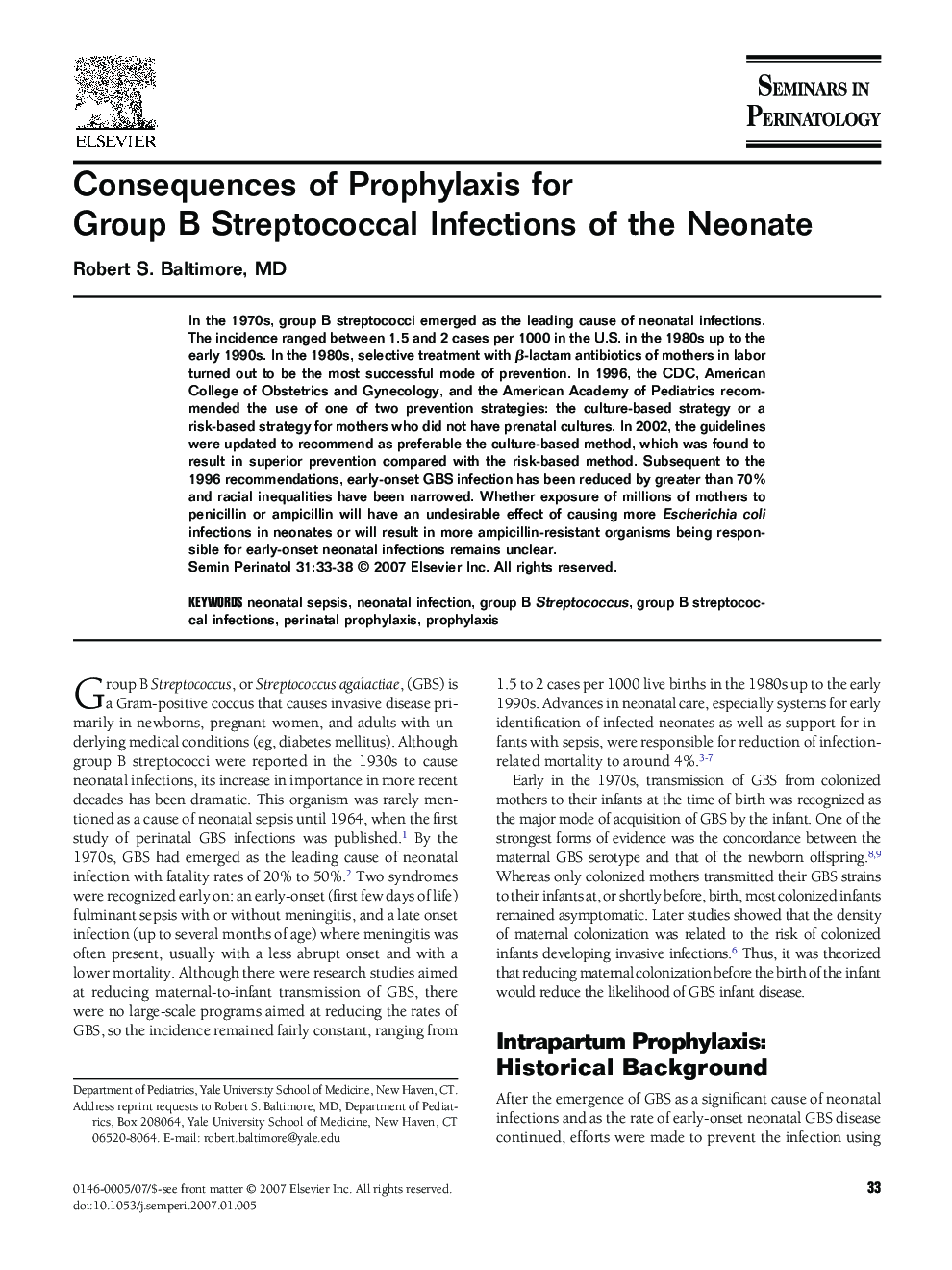| کد مقاله | کد نشریه | سال انتشار | مقاله انگلیسی | نسخه تمام متن |
|---|---|---|---|---|
| 3836953 | 1247574 | 2007 | 6 صفحه PDF | دانلود رایگان |

In the 1970s, group B streptococci emerged as the leading cause of neonatal infections. The incidence ranged between 1.5 and 2 cases per 1000 in the U.S. in the 1980s up to the early 1990s. In the 1980s, selective treatment with β-lactam antibiotics of mothers in labor turned out to be the most successful mode of prevention. In 1996, the CDC, American College of Obstetrics and Gynecology, and the American Academy of Pediatrics recommended the use of one of two prevention strategies: the culture-based strategy or a risk-based strategy for mothers who did not have prenatal cultures. In 2002, the guidelines were updated to recommend as preferable the culture-based method, which was found to result in superior prevention compared with the risk-based method. Subsequent to the 1996 recommendations, early-onset GBS infection has been reduced by greater than 70% and racial inequalities have been narrowed. Whether exposure of millions of mothers to penicillin or ampicillin will have an undesirable effect of causing more Escherichia coli infections in neonates or will result in more ampicillin-resistant organisms being responsible for early-onset neonatal infections remains unclear.
Journal: Seminars in Perinatology - Volume 31, Issue 1, February 2007, Pages 33–38